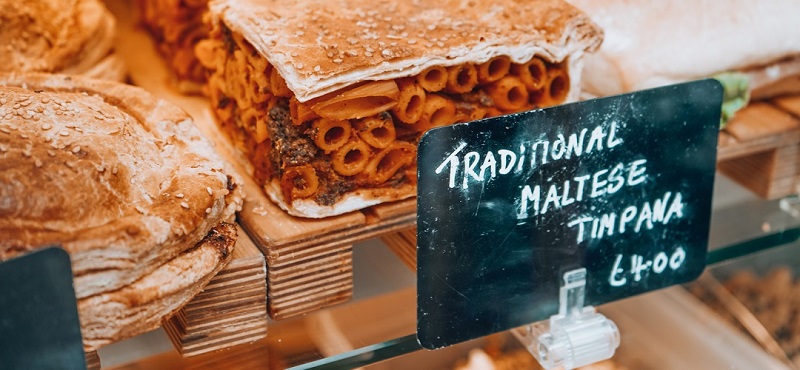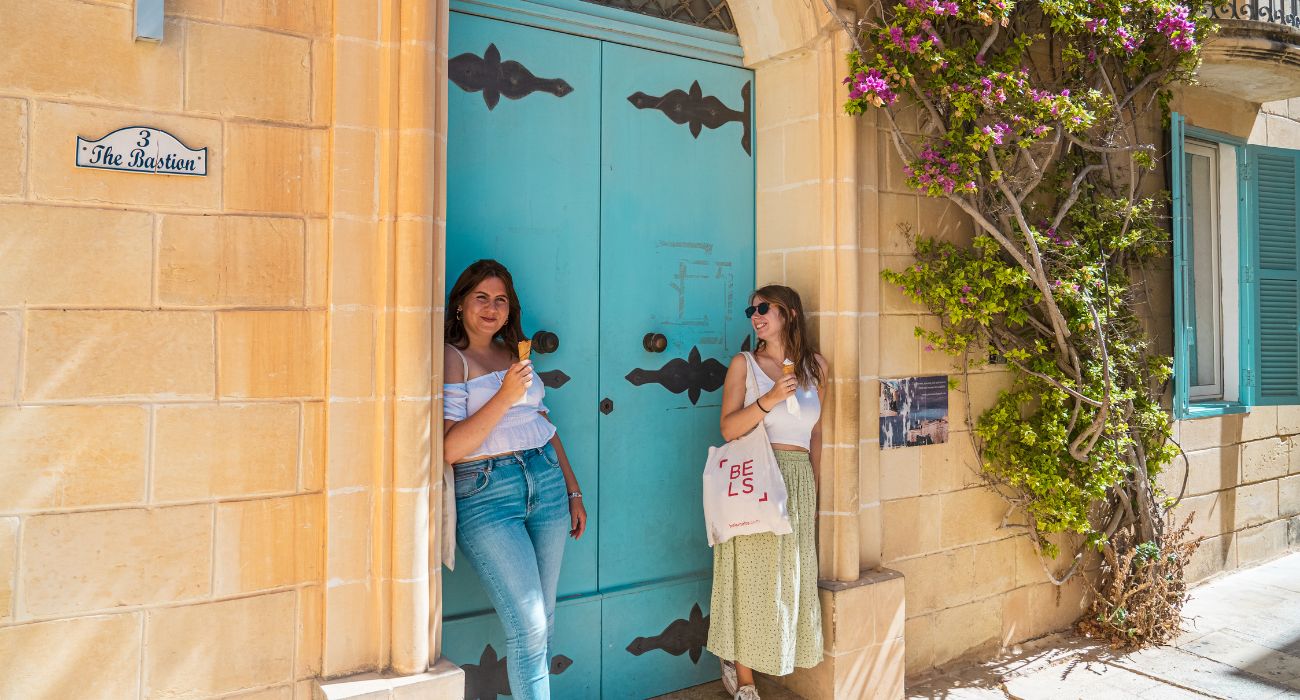Top 12 Traditional Maltese Foods – Your Ultimate Guide
Each country has a unique cuisine that reflects its culture, and traditional Maltese food is no exception. With its Mediterranean roots and intricate history, Maltese cuisine is a memorable experience. In this blog, we will provide you with a list of traditional foods that you must try.

12 Traditional Maltese Foods to add to your Foodie Bucket-list
Malta, a picturesque archipelago in the heart of the Mediterranean, is a hidden gem for travellers and food enthusiasts. Its rich history and diverse cultural influences are reflected in the unique blend of Maltese cuisine. From savoury pastries to hearty stews and fresh seafood dishes, Maltese food is a testament to the island’s ability to preserve its culinary traditions while embracing the world’s flavours. Join us on a delectable journey as we explore the unique and mouthwatering world of traditional Maltese food, uncovering the secrets of its recipes, the stories behind its ingredients, and the cultural significance that has made this cuisine a true culinary treasure.
1. Pastizzi
Pastizzi, baked pastries that are traditionally stuffed with ricotta or peas, are probably the most famous traditional Maltese food. Variations have developed over the years, with spinach or chicken fillings becoming popular. Qassatat is a different version of pastizzi, usually bigger and using shortcrust pastry instead of filo. Many pastizzi shops – typically hole-in-the-wall establishments – have developed a rather large menu variety, including baked rice, baked pasta, an assortment of sausage rolls and pies, and sweets! All for under 2 euros a piece and sinfully delicious.
In recent years, Pastizzi has become quite the cultural symbol here. The craft of Pastizzi making has an interesting history and is deeply rooted in Maltese tradition. Curious? Watch here:
2. Ftira biż-żejt
Another very typical snack is the ftira biż-żejt. This traditional Maltese food consists of a single portion of Maltese bread spread with tomato paste and olive oil and stuffed with a variety of ingredients that may include tuna, Gozo cheeselets, capers, olives, pickled vegetables, salad, and more. This is commonly eaten as a lunch-on-the-go or a seaside snack and is available from most food kiosks and bars.
Want to know where to find the best ftira? Watch here:
3. Gozitan Ftira
On the sister island of Gozo, ftira has an altogether different meaning, with a traditional food tied entirely to this island. Gozitan ftira resembles a pizza or focaccia, and the typical ingredients include potatoes, capers, tomatoes, onions, anchovies and/or tuna. A key characteristic is that it’s made of bread dough (instead of pizza dough) and baked in a firewood oven. When in Gozo, search for traditional bakeries that make fresh ftira.
4. Bigilla
Bigilla is a bean paste or dip made from fava beans, locally known as “ful tal-ġirba”, and includes garlic, chilli peppers, parsley, and olive oil. The paste was traditionally sold hot from bigilla vendors on the street; however, now it is available at all supermarkets. It is typically served as a dip with galletti (water biscuits), as a spread for sandwiches, or as an additional ingredient in other dishes. Healthy and delicious!
5. Maltese platter
In typical Mediterranean style, a shared lunch snack will consist of a finger-food platter that will include broken Maltese bread and galletti, along with bigilla, capers, pickled onions, sundried tomatoes, stuffed olives, and Gozo cheeselets. Olives are often depicted as a delicacy, but in Malta they are a daily food typically stuffed with anchovy or tuna. Gozo cheeselets – ġbejniet – come in many variations; they are made from sheep or goat’s cheese and may be soft or hard, plain or peppered. Drizzled with olive oil, of course.
6. Rabbit (Fenek)
Undoubtedly, it is one of the most famous traditional Maltese dishes. Some places even specialize in hosting a “fenkata”, which is the term used when locals go out to eat, specifically, rabbit. Mġarr and Baħrija are well-known for such establishments; do not expect anything fancy! The starter will usually consist of “bebbux bl-aljoli” (snails in a garlic sauce) to snack on, followed by a starter of spaghetti with rabbit sauce. The rabbit itself is typically served fried in garlic or as a stew and washed down with good local wine.
7. Octopus (Qarnita)
Another favourite among traditional Maltese dishes is octopus stew, which is typically served fried in garlic or as a stew, while spaghetti with octopus sauce is also popular. The best place to eat octopus is a fish restaurant serving fresh catch; Marsaxlokk – Malta’s best-known fishing village and fish market – is probably your best choice.
8. Lampuki (Dorado fish)
Only available in September, when the Mediterranean Sea around Malta is warm and calm, the lampuka is Malta’s national fish, and locals keenly await the season when they can taste its delicious, white, flakey flesh. The fish is typically fried and served whole or in pieces – watch out for the fish bones! The traditional lampuki sauce is made from fresh tomatoes, olives, capers, olive oil, salt, and pepper. This is a traditional Maltese food you absolutely must try if you’re here in season.
9. Baked Potatoes (Patata l-forn)
This is the Maltese equivalent of the English Sunday roast. The preparation is simple: a layer of onions, a layer of thickly sliced potatoes, a layer of pork steaks, and another layer of potatoes; add water, season, and chuck in the oven. The resulting dish is delicious, with a variety of soft and crunchy potatoes. The potatoes can also be prepared alone, without the meat, to serve as a side dish to another preparation.
10. Timpana (Baked pasta/rice)
Originally, Timpana refers to pasta in a bolognese sauce that is baked with an additional layer of pastry added as a crust. It’s a common household recipe, and you can even find it sold at most local pastry shops on the streets. You can learn more here:
11. Imqaret
Imqaret is the traditional Maltese “street sweet,” if ever there was one. Typically sold from small mobile imqaret friers, imqaret consists of dates wrapped in pastry, which is then deep-fried. You may have them served in a restaurant with a dollop of vanilla ice cream. Yumm!
12. Pastini tal-lewz (almond sweet)
Almonds are a big thing in Maltese sweets. These small almond sweets are typically enjoyed with afternoon tea, but there is a huge variety of traditional sweets made from almonds: figolli, kwarezimal, prinjolata, and the traditional wedding cake are all made from almonds.
Join Us in Malta and Immerse Yourself in English Excellence!
As you’ve just experienced the tantalizing world of traditional Maltese food, you might be contemplating how to make your stay on this enchanting Mediterranean island even more enriching. Well, look no further!
Our English school in Malta is your gateway to an incredible language-learning adventure. With our expert instructors, immersive English language programs, and a vibrant international community, you’ll savour Maltese cuisine’s flavours and master the global language of communication – English.
Imagine exploring the Maltese archipelago, indulging in local delicacies, and confidently conversing with both locals and fellow travellers. Our school provides the perfect blend of language education and cultural immersion, making your stay in Malta a truly memorable and rewarding experience. We can also arrange accommodation with a local host-family to experience the culture in all aspects.
Don’t let this opportunity slip through your fingers! Join us in Malta to elevate your English skills while savouring the beauty of the Mediterranean. Contact us today to begin your journey, and let Malta’s rich traditions and global connections become an integral part of your life-changing adventure!
Experience Malta with BELS
Learn English, Socialise, and Explore the Island with Like-Minded People
Discover our Courses


